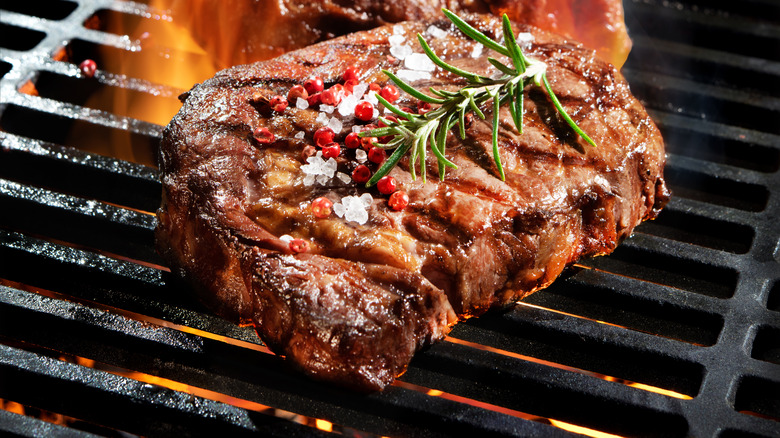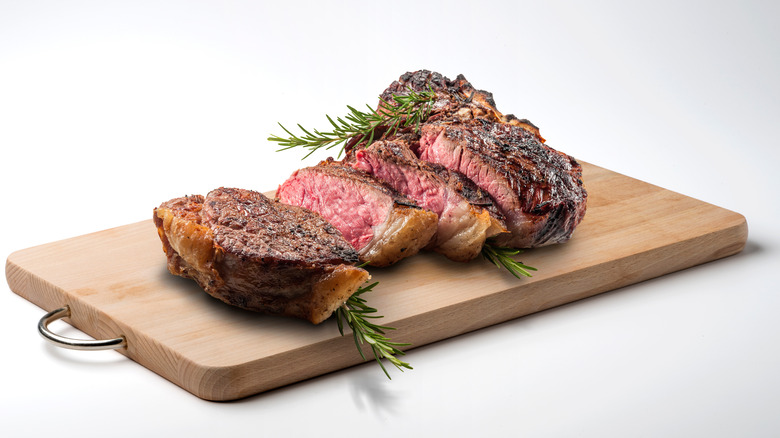The Big Mistake Everyone Makes When Grilling Steaks
Warm weather is here, outdoor gatherings have gotten the green light, and it's time for the barbecues we dreamed about all winter long. Some grillers stick to the basic burgers and dogs, others go the healthy route with salmon or veggies, but the true meat purists go all in with steak. Even folks who are watching their red meat intake find it hard to resist a beautifully seared New York strip or filet done to melt-in-the-mouth perfection.
Because steak is such an indulgence, it's important to get it just right when you're planning a grill session — and that starts with the selection of the meat itself. According to Allrecipes and other experts, USDA Prime isn't easy to come by, but it's worth the hunt for the quality of the meat. If you can't find it at your market or butcher's, then a Choice grade is your next best bet. Look for a well-marbled cut, which ensures the flavor that fat provides. As for the cut, chef Dan Sharp told Food & Wine that a skirt steak cooks up beautifully on the grill.
The next step is proper prepping. Take your steak out of the fridge about an hour before you're ready to fire up the grill, which will allow it to come to room temperature and cook evenly. While it's out, season it liberally with a good sea salt or kosher salt; the larger grains will add just the right savoriness to the meat as they sink in. (Regular table salt can make the steak too salty.)
Never slice a steak right after cooking
Once your grill is oiled and red-hot (both of which are necessary for that beautifully caramelized crust), it's finally time to put the meat to the heat. Much as you may want to look like a "true" chef by flipping your steak over and over, that's actually a rookie mistake. "The best thing to do to a steak on the grill is to leave it alone," says the Omaha Steaks website (and they should know!). The searing heat is what makes the fat melt into the middle of the meat, with no pressing or poking needed. Turn the steak over once when it's about 60% cooked — which ranges from two to 13 minutes, depending on the thickness of the steak and how well you want it done. For instance, a 1-inch thick, medium-rare steak should be flipped after five minutes and then cooked four minutes longer.
After you take the steak off the grill, the other big mistake to avoid is cutting into it right away. Tenting it with foil and letting it rest for at least five to 10 minutes allows the meat to finish cooking on its own and distributes the juices throughout. The thicker the steak, the longer it should rest. Cutting the steak while it cooks is also a no-no; to check for doneness, use a meat thermometer. A rare steak should read between 115-130° F; a well-done cut will read over 160° F. Now you're ready to enjoy the fruits (or meats?) of your labor!

